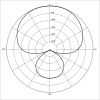- your audience needs to hear you, and you need to hear yourself.
- In the early days of pop and rock bands it was common to provide only front-of-house (FOH) amplification, commonly mixed from the stage by a member of the band (who, of course, couldn't hear the FOH PA properly).
- No-one is properly in control of what the audience hears.
- progress has been made and we now recognise that it is essential to have the mix position at front-of-house, placed centrally amidst the audience area
- Stage monitoring is taken very seriously by top professionals, and should be by anyone working in live performance, right down to pub gig or theatre foyer level
Sound In The Performing Arts
Hi, I'm Giulia Mifsud and I am a Performing Arts student. This blog is for info about sound
Tuesday, November 29, 2016
points about Stage monitoring for performance
Headphones
 Headphones are a pair of small listening devices that are designed to be worn on or around the head over a user's ears. They are electroacoustic transducers, which convert an electrical signal to a corresponding sound in the user's ear. Headphones are designed to allow a single user to listen to an audio source privately without letting anyone else hear your content.
Headphones are a pair of small listening devices that are designed to be worn on or around the head over a user's ears. They are electroacoustic transducers, which convert an electrical signal to a corresponding sound in the user's ear. Headphones are designed to allow a single user to listen to an audio source privately without letting anyone else hear your content.
Wireless headphones are headphones that connect to a device, such as a smartphone, stereo speaker, television, gaming console, computer, or other electronic devices without using a wire or cable usually by bluetooth.
Tuesday, October 25, 2016
Microphone Polar Patterns
A microphone's directionality or polar pattern indicates how sensitive it is to sounds arriving at different angles about its central axis. The polar patterns illustrated above represent the locus of points that produce the same signal level output in the microphone if a given sound pressure level (SPL) is generated from that point.

Omnidirectional:An omnidirectional microphone's response is generally considered to be a perfect sphere in three dimensions. In the real world, this is not the case. As with directional microphones, the polar pattern for an "omnidirectional" microphone is a function of frequency
Cardioid(1, Hypercardioid(2, Supercardioid(3, Subcardioid(4
 |
| Cardioid |
The most common unidirectional microphone is a cardioid microphone, so named because the sensitivity pattern is "heart-shaped", i.e. a cardioid. The cardioid family of microphones are commonly used as vocal or speech microphones, since they are good at rejecting sounds from other directions. In three dimensions, the cardioid is shaped like an apple centred around the microphone which is the "stem" of the apple.
 |
| Hypercardioid |
The cardioid response reduces pickup from the side
and rear, helping to avoid feedback from the monitors.
Since these directional transducer microphones achieve
their patterns by sensing pressure gradient,
putting them very close to the sound source
 |
| Supercardioid |
(at distances of a few centimeters) results in a bass
boost due to the increased gradient.
This is known as the proximity effect. The SM58 has been the
most commonly used microphone for
live vocals for more than 50 years demonstrating
 |
| Subcardioid |
the importance and popularity of cardioid mics.
Subscribe to:
Comments (Atom)